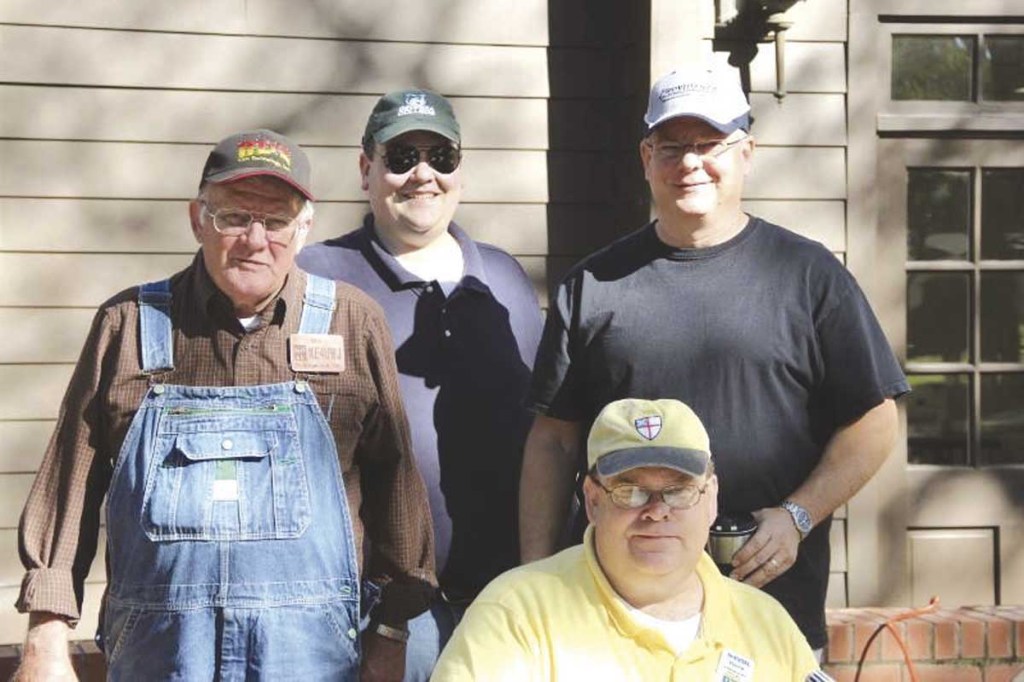Amateur Radio Club makes contacts from across the globe
Published 2:00 pm Tuesday, July 18, 2017

- Since the club’s inception in 1961, the MARC has brought together amateur radio enthusiasts, also known as ‘hams’, from Milledgeville and across Middle Georgia.
MILLEDGEVILLE, Ga. — When Daniel Simpson and Father David Probst turn on a special device in each of their houses, they can converse with people across the world at the touch of a button.
The communications aren’t sent through Facebook or email; in fact they’re not sent via computers at all. The messages are sent by amateur radio, and connect Simpson and Probst to a network of users all across the globe.
“I don’t have [the number] for the country, but I know that there are roughly 80 in Baldwin County, and if you do counties that touch Baldwin County, so Putnam, Hancock, Washington, Wilkinson and Jones, it’s right at 300 in those counties,” said Simpson, vice president of the Milledgeville Amateur Radio Club. “We represent a very large population for a hobby.”
Since the club’s inception in 1961, the MARC has brought together amateur radio enthusiasts, also known as ‘hams’, from Milledgeville and across Middle Georgia. Begun as an offshoot of a student club at Georgia Military College after its original members graduated college, the club has served as a resource for amateur operators for nearly 65 years (a founding member of that group, Charles Pennington of Sandersville, remains a club member to this day). Although the hobby is often seen as dying or outdated, new technologies and modes of communication have created a new generation of amateur enthusiasts.
“There are so many different things in this hobby for people to do, and that’s the thing that’s really neat about it,” said Probst. “Daniel and I do some of the same stuff, but everybody in the club isn’t interested in the same thing. We have some members that enter contests, some members that are interested in digital modes, meaning things you can do with your computer through a radio, and people can also talk via satellites. We don’t have any in our club, but there are people who will bounce a signal off the moon just because they can.”
For a hobby that can trace its roots back as early as the late 19th century, amateur radio has grown to incorporate a vast number of voice, text, image and data transfer technologies by operators across the globe. Ham radios can be operated from nearly any point across the globe and, together with a portable power source, do not rely on any centralized cell towers or infrastructure. This ability allows operators to send and receive communications in times of crisis and natural disaster, giving hams a unique role as the go-to messengers for wherever internet and phone lines are knocked out.
“In fall of 2011, there was a bomb threat [at Georgia College] … and I had just started working there as an academic advisor,” said Simpson. “There were so many people trying to call and text their families to say that they were OK that it crashed the cellphone system in Milledgeville. When something like that happens … one of the things we do is called ‘Health and Welfare Traffic’ where we set up and you can come and send what is basically an old-fashioned telegram that says ‘I’m at this location’, “I’m fine’, or whatever you want it to say.”
Last month, the MARC took part in the annual American Radio Relay League Field Day, June 24, a national event for ham operators that is meant as a kind of dress rehearsal in case of a widespread disaster or crisis. Operators relayed messages using alternative power sources to simulate what might happen if phone and internet service in their area were to go out, and despite being hampered for two hours by thunderstorms (many long-range radios rely on tall metal antennas), club members made contacts with 29 U.S. states and three Canadian provinces.
Aside from sending out messages in times of emergency, the club has also set out to educate people about their often obscure but vitally important discipline. For Probst, the real draw of ham radio is being able to talk to anybody, no matter their location in the world.
“I talked to a guy in Fiji a few months ago, and it’s just amazing to me that that frequency bounced in the right way to get from my backyard to this guy literally on the other side of the world,” he said. “Out of all the signals in the whole world, mine got through and the guy heard it.”
The Milledgeville Amateur Radio Club meets every third Saturday at 10 a.m. inside Wardens’ Hall at St. Stephens Episcopal Church. The club offers a licensing test after every meeting to any person wishing to earn an ARRL certification.



